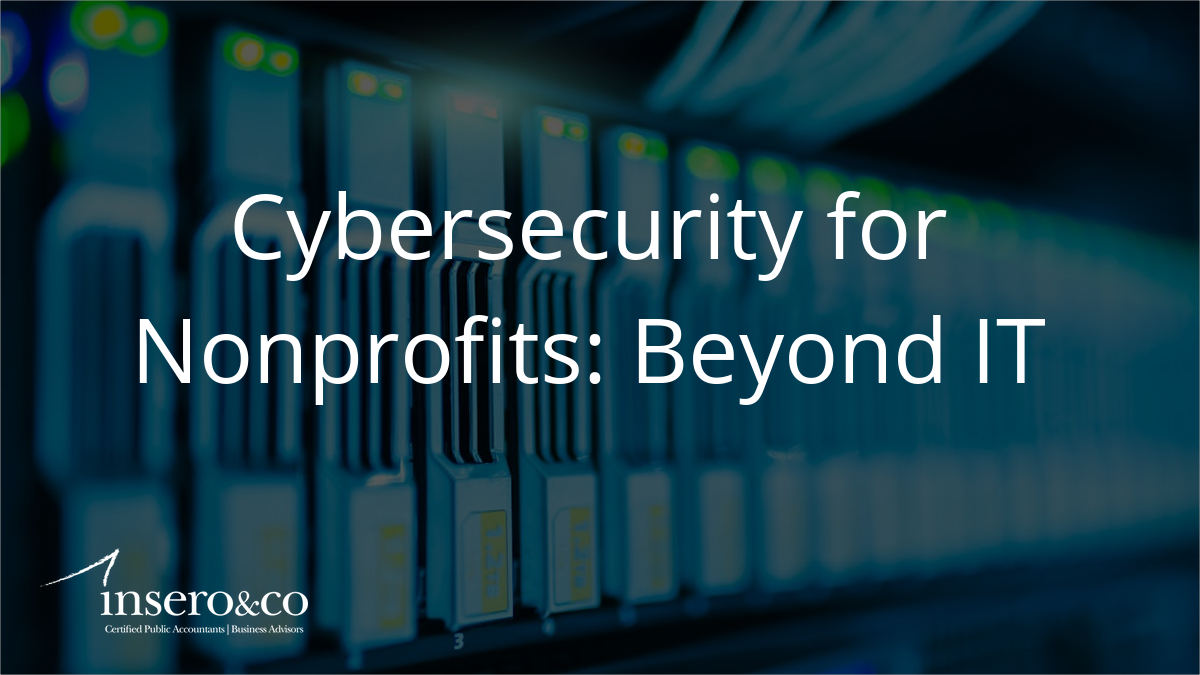Common challenges to successful reimbursement
ARTICLE |
Authored by RSM US LLP
CARES Act, COVID-19 and other grant-related expenditures
Each of the following scenarios is expecting to or has received a significant amount of federal funding, some of which is new funding that did not exist before now, and may be subject to the Stafford Act, CARES Act, American Rescue Plan, American Jobs Plan and any number of other federal regulations for the use of federal grant monies.
- A public hospital conducting testing or administering vaccines at an off-site location
- A school district or state college shutting down all campus activity and suddenly implementing distance learning
- A city government procuring emergency personal protect equipment and opening an emergency operations center for an indefinite amount of time
- A state agency implementing a new emergency response program to prevent evictions and homelessness
State and local government entities face significant challenges in prioritizing public health and safety while balancing prudent, diligent and well-documented procedures in order to facilitate and maximize eligible costs for reimbursement. But this is also an opportunity to centralize how organizations manage their grant funding and to evaluate controls and procedures around procurement, contracting and documenting expenditures funded by grants.
The code of federal regulations (CFR) includes specific rules for how to administer the use of federal funding. Specifically, Title 2, Subtitle A, Chapter II, Part 200 “Uniform Administrative Requirements, Cost Principles, and Audit Requirements for Federal Awards”—2 CFR section 200—allows for a standardized methodology by which federal agencies gather data and distribute funds in order to carry out their respective statutory responsibilities, even during a global pandemic or other emergency event. Adding to the complexities, funding agencies will have their own guidance layer, eligibility criteria and other compliance requirements to consider.
Here are three important steps for eligible entities, including state and local governments, to take as they submit applications, request federal reimbursement requests, and submit required spending reports for funding in compliance with federal requirements.
1. Understand the procurement requirements
Subsections 200.317–200.326 are the procurement standards of the regulations. The most common area of noncompliance of awarded funds noted by federal auditors and inspectors general relates to ineligible costs as a result of noncompliant contracting practices.
Examples that RSM has noted during compliance audits related to 2 CFR section 200 include improper or incomplete justification for noncompetitive selection when claiming exigency or emergency, not having a proper contract in place when required, not establishing reasonableness of costs paid when awarding sole source or time and materials contracts, and not including (or adequately monitoring) the required contract provisions for the use of federal funds. It is important to note that following one’s own procurement policy for emergency purchases is not enough, as the federal requirements are generally more restrictive than local policies.
Generally, and most commonly during an emergency event, the easiest control measures to consider related to these issues include (but are not limited to) the following:
- Documenting sole source justification as soon as possible, to include the circumstances of the emergency and specifically why the chosen vendor(s) was selected. This should include a cost analysis in relation to similar services provided during a nonemergency event by the same and at least one other contractor, and the source of the data included in the analysis. A cost analysis should also be performed for any contracts that are time and materials based, rather than fixed fee or unit cost pricing.
- Ensuring that a documented contract is approved and executed. A purchase order or vendor invoice is not enough, primarily because the required scope, timing, approved costs, and terms and conditions are not properly documented or complete.
- Updating contract templates to include the required federal provisions, and marked as “not applicable” as needed. This could be included in the primary agreement or as an exhibit to the standard agreement.
- As soon as practical after the emergency event, issuing a competitive solicitation for the services under a continuing agreement, to be used as needed until closure for the current event, as well as to reduce the need for future disaster emergency procurement.
2. Collect and organize documentation
In addition to contracting, the second most common request for supplemental information (RFI) is for missing supporting documentation. This includes copies of invoices, proof of payment and labor support among others.
All expenditures must have adequate supporting documentation in order to be eligible. Depending on the nature, extent and amount of the expenditures, this can prove to be challenging for agencies of any size, but can be particularly cumbersome for small or decentralized entities.
Entities should keep their grant-related information in one place. It may help to adopt a naming convention for all electronic files, tagging them with fields that distinguish respective categories. It may also help to use internal project numbers or activity codes if systems allow for that configuration. Each expenditure related to the event should include that project or activity code.
If possible, data collection should be centralized to a grant manager or a grant team, and periodic training should be performed for administrative personnel that will be responsible for documenting or collecting the data. It is also very important to note that certain categories of costs require multiple pieces of information. For example, personnel costs for performing grant-related duties may require timesheets, activity logs, pay registers, or a combination of all three. Paying special attention to the grant requirements and procedural guidelines is critical. Not having one or more of the items can delay reimbursement and possibly deem the expenditures as ineligible for funding. Additionally, compiling this documentation in advance will also aid an agency with preparing for a Single Audit.
3. Consider the use of technology
Software can help centralize all of an entity’s federal and state awards onto a single platform, perform calculations, assist with grant administration and provide information necessary for reporting. Entities must examine their needs and organizational readiness to determine whether Microsoft Excel or a third-party software program best suits them.
In general, third-party software is superior for entities with a relatively large number of grants but can also prove to be very beneficial for smaller entities.
Various studies have shown that up to 90% of spreadsheets contain inaccuracies as a result of human entry errors that could have been avoided. Some examples include formula errors; inaccurately copying and pasting into the wrong cells; and keying in incorrect information, such as transposing a number.
As third-party software continues to develop, programs range in their capabilities. Basic software can perform calculations and generate reports. More advanced technology can onboard leases, remind users of renewals, account for footnote disclosures and more. A trusted advisor can help implement this software and centralize an organization’s grant funding portfolio as part of a comprehensive plan tailored to the entity’s needs.
The takeaway
State and local government entities will continue to receive funding from the federal government, and it is important to have processes and systems in place to facilitate management and compliance.
This article was originally published June 30, 2020.
Do you have questions or want to talk?
Call us at (800) 232-9547 or fill out the form below and we’ll contact you to discuss your specific situation.
This article was written by RSM US LLP and originally appeared on 2021-05-13.
2020 RSM US LLP. All rights reserved.
https://rsmus.com/what-we-do/industries/government/state-and-local-government/3-steps-to-maximizing-federal-grant-compliance.html
RSM US Alliance provides its members with access to resources of RSM US LLP. RSM US Alliance member firms are separate and independent businesses and legal entities that are responsible for their own acts and omissions, and each are separate and independent from RSM US LLP. RSM US LLP is the U.S. member firm of RSM International, a global network of independent audit, tax, and consulting firms. Members of RSM US Alliance have access to RSM International resources through RSM US LLP but are not member firms of RSM International. Visit rsmus.com/aboutus for more information regarding RSM US LLP and RSM International. The RSM(tm) brandmark is used under license by RSM US LLP. RSM US Alliance products and services are proprietary to RSM US LLP.

Insero & Co. CPAs, LLP is a proud member of RSM US Alliance, a premier affiliation of independent accounting and consulting firms in the United States. RSM US Alliance provides our firm with access to resources of RSM US LLP, the leading provider of audit, tax and consulting services focused on the middle market. RSM US LLP is a licensed CPA firm and the U.S. member of RSM International, a global network of independent audit, tax and consulting firms with more than 43,000 people in over 120 countries.
Our membership in RSM US Alliance has elevated our capabilities in the marketplace, helping to differentiate our firm from the competition while allowing us to maintain our independence and entrepreneurial culture. We have access to a valuable peer network of like-sized firms as well as a broad range of tools, expertise, and technical resources.
For more information on how Insero & Co. CPAs can assist you, please call (800) 232-9547.




